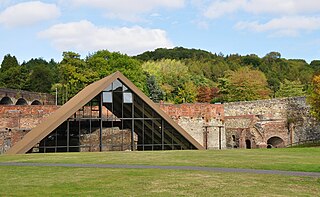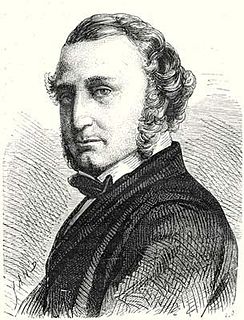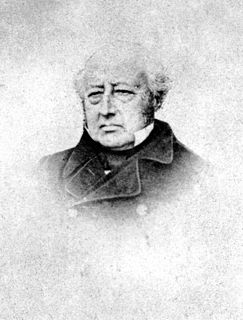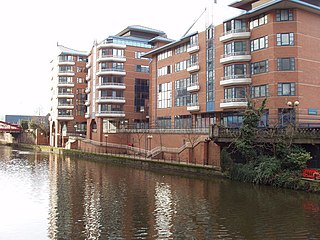Related Research Articles

The London and North Western Railway was a British railway company between 1846 and 1922. In the late 19th century, the L&NWR was the largest joint stock company in the United Kingdom.

James Henry Greathead was a mechanical and civil engineer renowned for his work on the London Underground railways, Winchester Cathedral, and Liverpool overhead railway, as well as being one of the earliest proponents of the English Channel, Irish Sea and Bristol Channel tunnels. His invention is also the reason that the London Underground is colloquially named the "Tube".

The Shropshire Union Canal, nicknamed the "Shroppie", is a navigable canal in England. The Llangollen and Montgomery canals are the modern names of branches of the Shropshire Union (SU) system and lie partially in Wales.

Coalbrookdale is a village in the Ironbridge Gorge in Shropshire, England, containing a settlement of great significance in the history of iron ore smelting. It lies within the civil parish called the Gorge.

Thomas Russell Crampton, MICE, MIMechE was an English engineer born at Broadstairs, Kent, and trained on Brunel's Great Western Railway.

The Liverpool Overhead Railway was an overhead railway in Liverpool which operated along the Liverpool Docks and opened in 1893 with lightweight electric multiple units. The railway had a number of world firsts: it was the first electric elevated railway, the first to use automatic signalling, electric colour light signals and electric multiple units, and was home to one of the first passenger escalators at a railway station. It was the second oldest electric metro in the world, being preceded by the 1890 City and South London Railway.

The Shropshire Union Railways and Canal Company was a Company in England, formed in 1846, which managed several canals and railways. It intended to convert a number of canals to railways, but was leased by the London and North Western Railway (LNWR) from 1847, and although they built one railway in their own right, the LNWR were keen that they did not build any more. They continued to act as a semi-autonomous body, managing the canals under their control, and were critical of the LNWR for not using the powers which the Shropshire Union Company had obtained to achieve domination of the markets in Shropshire and Cheshire by building more railways.
Dick, Kerr and Company was a locomotive and tramcar manufacturer based in Kilmarnock, Scotland and Preston, England.
Kerry is a village and geographically large community in Montgomeryshire, Powys, Wales.

The Birmingham and Liverpool Junction Canal was a canal in England which ran from Nantwich, where it joined the Chester Canal, to Autherley, where it joined the Staffordshire and Worcestershire Canal. Forming part of a major link between Liverpool and the industrial heartlands of the Midlands, the canal was opened in 1835, and merged with the Ellesmere and Chester Canal Company in 1845, which became the Shropshire Union Railways and Canal Company in the following year.
Liverpool in North West England, is a major British city with significant road, rail, and ferry networks, in addition to an international airport and a well-known dock system. As with most other major UK cities, Liverpool's transport infrastructure is centred on its road and rail networks. Public transport services within the city are controlled and run by Merseytravel.
John Dickson (c1819-1892), was a railway contractor responsible for the promotion, construction and operation of several railway lines in England and Wales, especially in and around Swansea. His finances were never securely based and he was forced into bankruptcy on three occasions.

Samson Fox was an English engineer, industrialist and philanthropist. He was elected Mayor of Harrogate in Yorkshire and the building of the Royal College of Music in London was funded largely by Fox.

Edward Bury was an English locomotive manufacturer. Born in Salford, Lancashire, he was the son of a timber merchant and was educated at Chester.
Willans may mean:
Robert Daglish (1779-1865) was a colliery manager, mining, mechanical and civil engineer at the start of the railway era.
James Walton was a British inventor and industrialist. He was known for the significant improvements he made to the carding process. He amassed a considerable fortune from his business ventures, and purchased two large family estates in Wales.
John Bancroft Willans was an English landowner, historian, photographer and philanthropist
Dolforgan Hall is a large manor house near Kerry, Powys.

Samuel Ellis and Company was a British engineering company, based in Salford, Lancashire. It operated, in various form, from 1832 to 1887.
References
- ↑ 1861 England, Wales & Scotland Census, 1861
- 1 2 3 4 "John William Willans". The Journal of the Iron and Steel Institute. The Iron and Steel Institute. 47–48: 354. 1895.
- ↑ Patent Office, Great Britain (2 July 1875). The Commissioners of Patents' Journal.
- ↑ "Married". Birmingham Mail. 11 April 1871.
- 1 2 Walford's County Families of the United Kingdom. 1908. p. 1152.
- 1 2 "The Late Mr. J. W. Willans". Montgomery County Times and Shropshire and Mid-Wales Advertiser. 16 March 1895.
- 1 2 3 "The Great Northern and City Railway Company". To-Day. 20 April 1895. p. 334.
- ↑ "WILLANS, JOHN BANCROFT (1881 - 1957), country landowner, antiquarian and philanthropist". Dictionary of Welsh Biography. The National Library of Wales. 2001.
- ↑ "Shareholders' Meeting". Wharfedale & Airedale Observer. 29 August 1890.
- ↑ "Death of Mr. J. W. Willians". Montgomery County Times and Shropshire and Mid-Wales Advertiser. 9 March 1895.